Born in Chapel Hill, North Caroline, artist Carol Eckert creates enchanting fiber sculptures that combine animal symbolism and mythology with a self originated technique involving coiling and wire. Despite Carol’s interest in textiles as a child she studied painting at Arizona State University and only began to work with fiber again after teaching art classes in a community arts center. Here she takes us on a journey into the creation of her work.
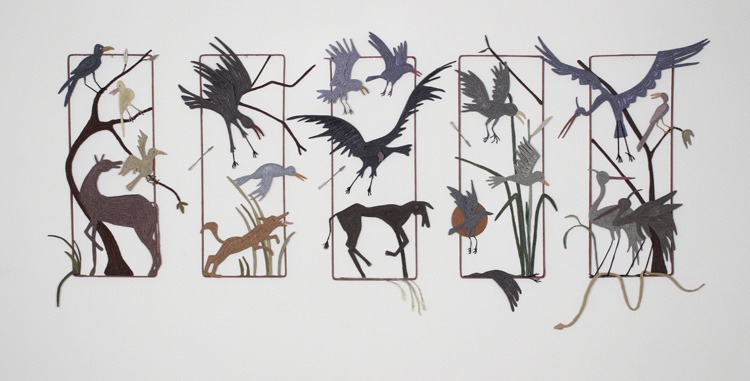
Myths and legends
From the story of Adam and Eve to the tale of Rappaccini’s Daughter, humankind’s complex relationship with the natural world has been recorded in myths and legends, many warning of the dangers lurking beneath nature’s beauty. The coiled fiber process I use to create my pieces is as old as the stories they tell. Coiling is an ancient technique, intertwined with humans’ enduring connection to nature — its earliest known use was the construction of vessels from gathered plant materials.
Each piece begins with symbols and stories — creation stories, legends of great floods, tales of journeys and quests, parables of good and evil. Mythology and art have been interwoven for as long as there have been humans on earth, and my work often explores this connection through animal symbolism.
Birds and predators figure prominently in my work. Birds have been a source of mystery to humans for centuries. Complex symbols that often mirror our own beliefs, they continue to be seen as augurs – a bird in the house brings bad luck, a stork is a sign of good fortune, the albatross is an omen of bad weather. Wolves have loomed large in my imagination since I was a small girl, haunted by the tale of Peter and the Wolf. They appear regularly in my pieces, drawn from sources as diverse as the environmental writings of Barry Lopez and Teutonic legends predicting the end of the world.
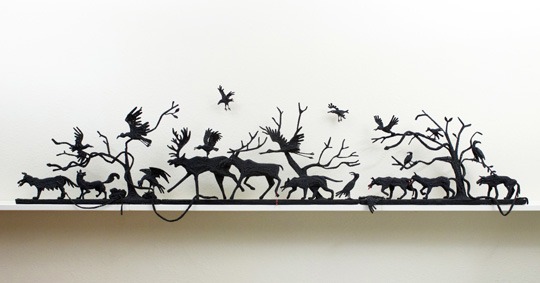
Stitch by stitch
I draw each piece and choose thread colors before I begin construction. Then I work directly from the drawing, which includes color numbers for reference. Occasionally I make small changes as the piece progresses but the finished piece is usually very similar to the drawing. Currently, I’m working on a piece which uses the traditional textile form of a palampore to explore issues of extinction.
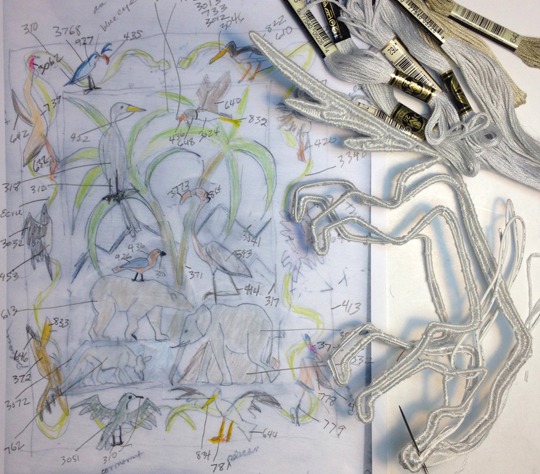
My pieces are often complex, but the technique is simple, requiring only a threaded needle. I work with various gauges of coated wire and with cotton and linen threads. The forms are built up slowly, stitch by stitch and row by row. The process is coiling, a basketry technique so ancient that no one is exactly certain when it first began. Though it is traditionally used to make vessels, I construct a myriad of coiled forms, including staffs, shrines, wall pieces and books.
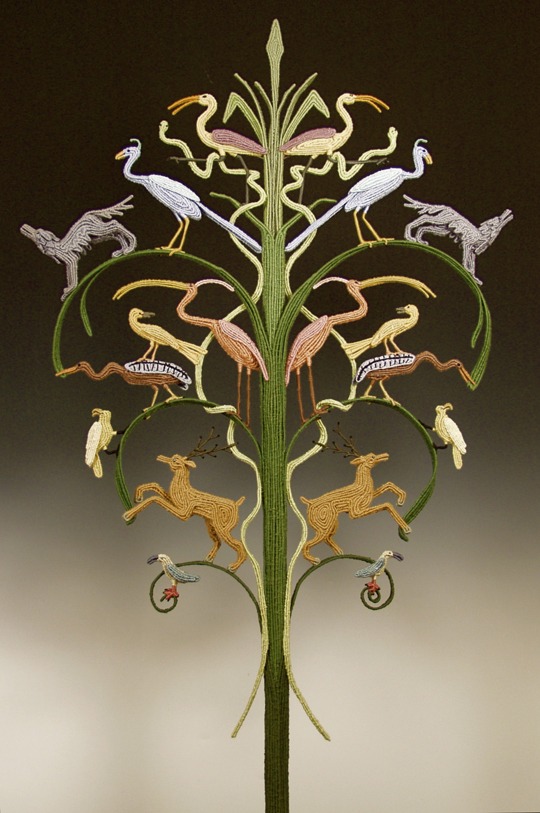
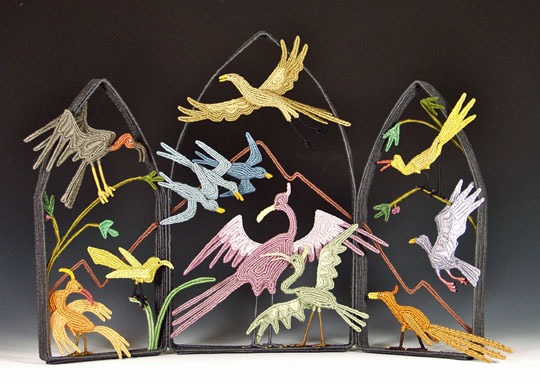
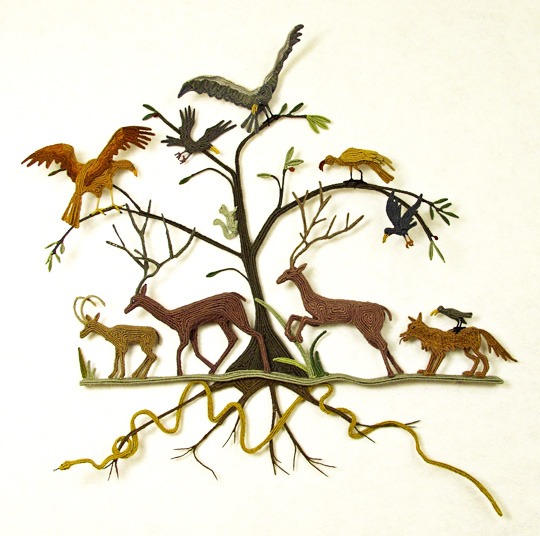
The first pieces I ever made were vessels – small containers with gatherings of birds attached to the lids. Over time, the imagery became more complex and the containers grew to include drawers, arches and secret compartments. In recent years, my work has become less three-dimensional and is now focused on book forms and wall pieces.
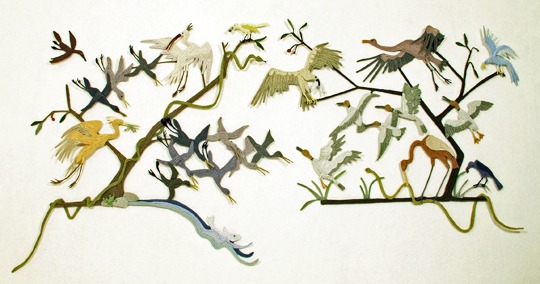
Painting and drawing
I arrived at basketry by a circuitous route. Beginning in childhood, I experimented with many textile processes – embroidery, quilting, sewing, resist dying, knotting. My university training was in painting and drawing, but I found myself gradually drawn back to fiber techniques after receiving my degree. Since I wasn’t formally trained in textiles, my influences tend to come from other areas and the names of the artists I’m most inspired by have been lost to history. Works that I admire include Japanese screens, traditional Jewish papercuts, and Medieval bestiaries.

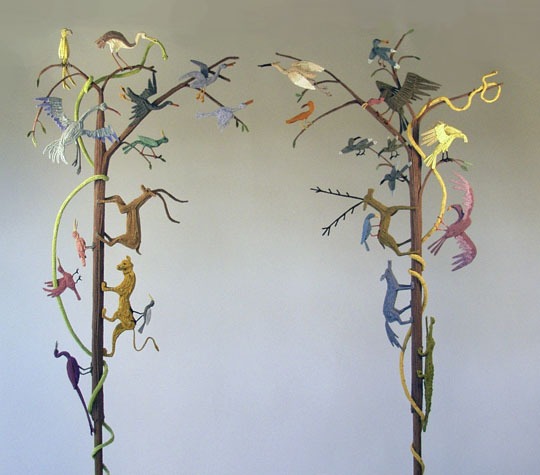
My approach is to concentrate on the work and spend as many hours in the studio each day as I possibly can. I begin early in the morning and often become so involved that I forget to take breaks. My studio is not large, but it is filled with things I treasure – bookcases stuffed with art history, poetry, and mythology books (including a collection of antique [easyazon_link asin=”0140446494″ locale=”UK” new_window=”default” nofollow=”default” tag=”wwwtextileart-21″ add_to_cart=”default” cloaking=”default” localization=”default” popups=”default”]Aesop’s Fables ); a shelf of family photos; terrariums of all sizes; and odd little collections: tape measures and rulers, lead animals, Empire State Buildings.
Upcoming exhibitions
This fall my work is included in exhibitions at Fort Wayne Museum of Art, Indiana; Museum of Arts and Design, NYC; Fuller Craft Museum, Brockton, Massachusetts; Racine Art Museum, Wisconsin; and Mobilia Gallery, Cambridge, Massachusetts.
My next workshop will be in the U.S. at the National Basketry Organization conference in St Paul, Minnesota, July 2015.
For more information please visit caroleckert.com and her basketry blog contemporarybasketry.blogspot.com
If you’ve enjoyed this interview with Carol please let us know by leaving a comment below
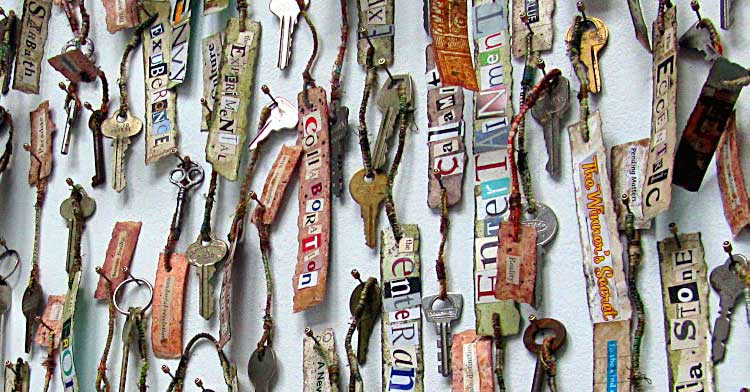
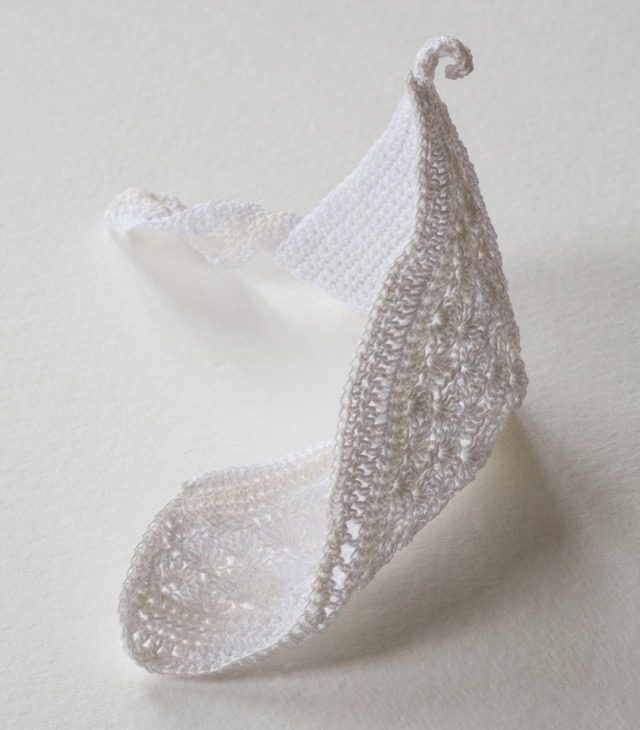
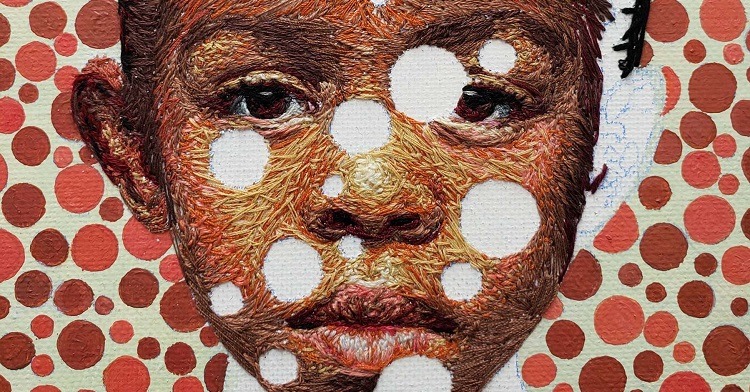
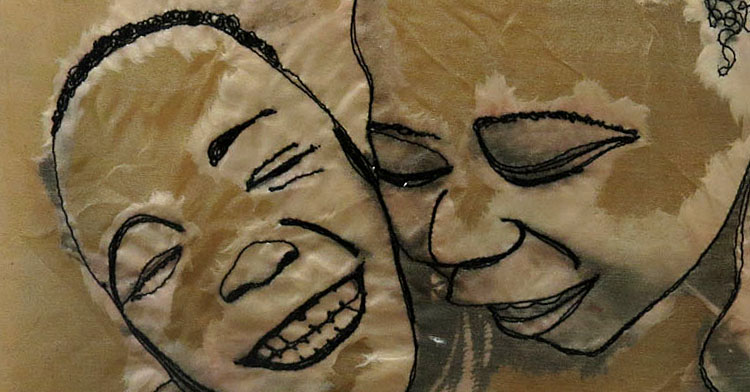
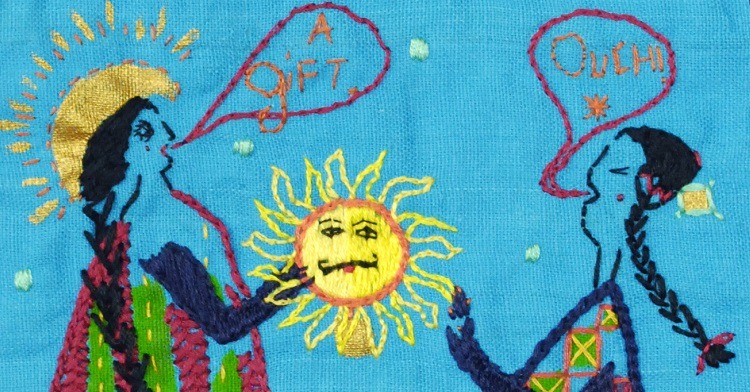
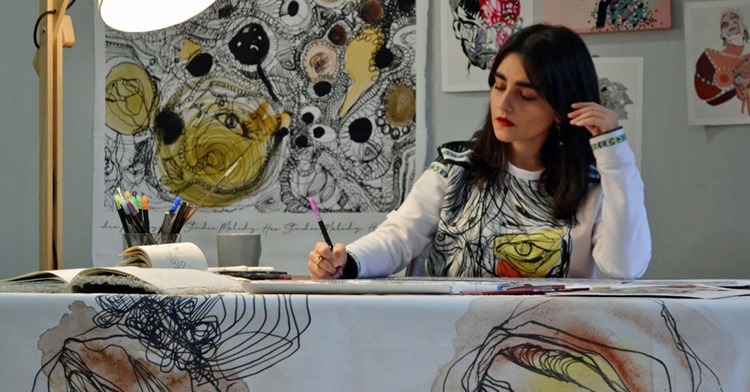
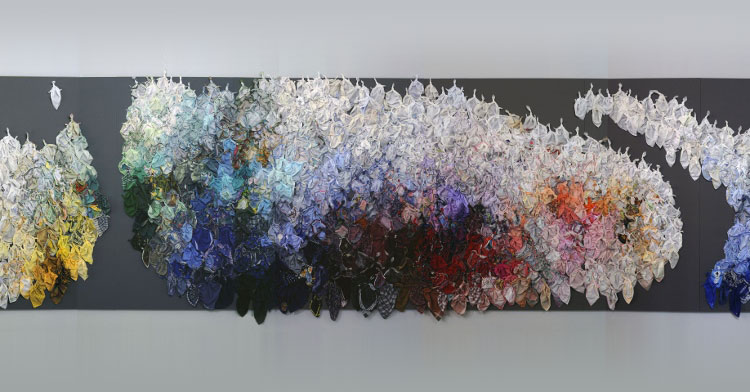
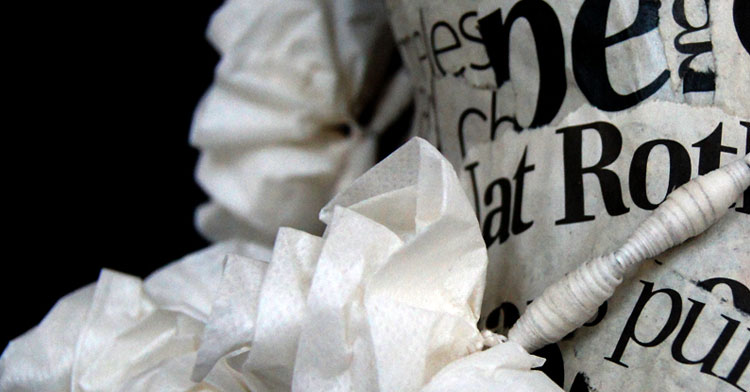
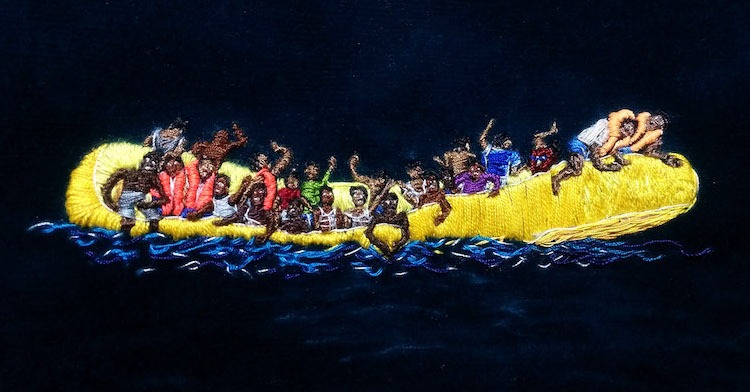
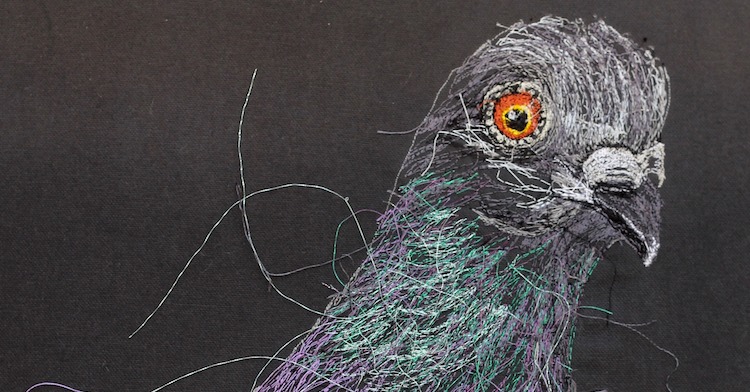
Comments